
The Republic of Texas, or simply Texas, was a breakaway state in North America. It existed for 10 years, from March 2, 1836 to February 19, 1846. It shared borders with Mexico, the Republic of the Rio Grande, and the United States of America.
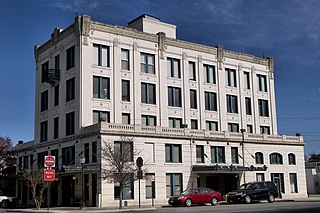
Seguin is a city in and the county seat of Guadalupe County, Texas, United States. The population was 29,433 at the 2020 census, and according to 2023 census estimates, the city is estimated to have a population of 36,013.

Brigadier-General Benjamin McCulloch was a soldier in the Texas Revolution, a Texas Ranger, a major-general in the Texas militia and thereafter a major in the United States Army during the Mexican–American War, sheriff of Sacramento County, a U.S. marshal, and a brigadier-general in the army of the Confederate States during the American Civil War. He owned at least 91 slaves.
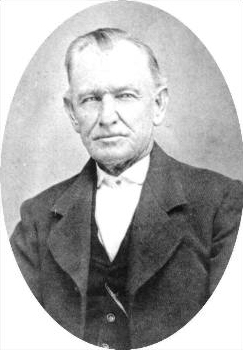
Henry Eustace McCulloch was a soldier in the Texas Revolution, a Texas Ranger, and a brigadier general in the army of the Confederate States during the American Civil War.

The West South Central states, colloquially known as the South Central states, is a region of the United States defined by the U.S. Census Bureau as covering four states: Arkansas, Louisiana, Oklahoma, and Texas. The West South Central or South Central region is located within the Southern United States and Gulf Coast regions, bordering the Mountain states and Midwestern U.S. regions to its north and west. The Gulf of Mexico is to the south of the region. Houston is the South Central's largest city, and the Dallas–Fort Worth–Arlington metropolitan statistical area is the region's largest metropolis.

Erastus "Deaf" Smith, who earned his nickname due to hearing loss in childhood, was an American frontiersman noted for his part in the Texas Revolution and the Army of the Republic of Texas. He fought in the Grass Fight and the Battle of San Jacinto. After the war, Deaf Smith led a company of Texas Rangers.
James Clinton Neill was an American soldier and politician, most noted for his role in the Texas Revolution and the early defense of the Alamo. He was born in North Carolina and served in the Alabama House of Representatives between 1825 and 1827.

John Coffee "Jack" Hays was an American military officer. A captain in the Texas Rangers and a military officer of the Republic of Texas, Hays served in several armed conflicts from 1836 to 1848, including against the Comanche Empire in Texas and during the Mexican–American War.

Henry Wax Karnes was notable as a soldier and figure of the Texas Revolution, as well as the commander of General Sam Houston's "Spy Squad" at the Battle of San Jacinto.
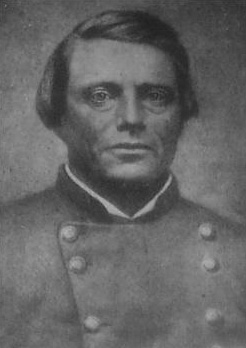
Thomas "Tom" Green was an American soldier and lawyer, who took part in the Texan Revolution of 1835–36, serving under Sam Houston, who rewarded him with a land grant. Green was clerk of the Texas Supreme Court until the outbreak of the Civil War, when he became a Confederate cavalry leader. After winning several victories, including the Battle of Valverde and the recapture of Galveston, he was promoted brigadier and assigned command of the cavalry division of the Trans-Mississippi Department. In the Red River Campaign, he was mortally wounded while charging a fleet of Federal gunboats. The Union naval commander David Dixon Porter paid tribute to Green as a serious loss to the Confederacy.
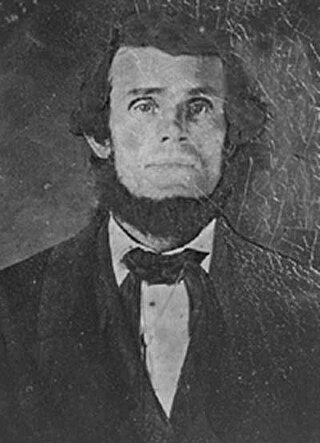
Logan Vandeveer was an early Texas Ranger, soldier, pioneer; ranger, cattleman, and civic leader. He was born in Casey County, Kentucky, around 1815. He was the son of William and Emily (Shackleford) Vandeveer. He came to Texas in 1833, joining Stephen F. Austin's Little Colony at Mina in present-day Bastrop County.
The Texas Military Forces (TXMF) are the principal instrument through which the Texas Military Department (TMD) executes security policy for Texas, which has the second-largest population and border in the United States.
John Christopher Columbus Hill was a Texan citizen who, at age 13, accompanied his brother and father on the Mier Expedition. He was captured, adopted by the Mexican president Santa Anna, and eventually became a successful engineer in the United States and Mexico.
Richard Franklin Bache, also known as Richard Bache Jr. (1784–1848), was a military and political official in the Republic and state of Texas. He assisted in drafting the Texas Constitution of 1845, the first of its five state constitutions.
James Smith was a General in the Texas Revolutionary Army.

The Texian Navy, also known as the Revolutionary Navy and First Texas Navy, was the naval warfare branch of the Texian armed forces during the Texas Revolution. It was established by the Consultation of the Republic of Texas on November 25, 1835. Along with the Texian Army, it helped the Republic of Texas win independence from the Centralist Republic of Mexico on May 14, 1836 at the Treaties of Velasco. It was replaced by the Texas Navy on March 23, 1839.
Andrew Jackson Sowell was a lifelong soldier and farmer in the 19th century. He was a participant in the Texas Revolution and a survivor of the siege of the Alamo. He continued his service during the years of the Republic of Texas, in the Mexican–American War, and the Civil War. He was a frontier defender, early Texas Ranger, and a friend and scout with Kit Carson.

Lynch Davidson was an American politician who served as the 26th lieutenant governor of Texas from 1921 to 1923.
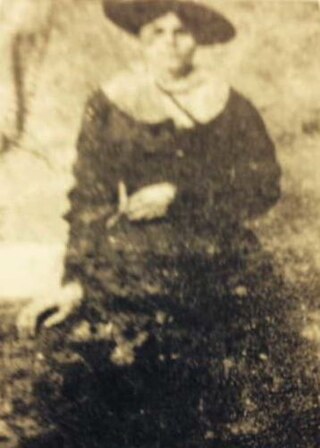
Sally Skull was the daughter of Rachel Rabb Newman and Joseph Newman, and arrived in Spanish Texas with the first settlers in Stephen F. Austin's colony in the early 1820s. She gained notoriety for her prowess in husbandry, skill in horse trading, marksmanship with the two pistols she carried, commanding language, and for transporting cotton and essential goods for the Confederacy. Skull owned and operated a successful horse ranch, where she employed ethnically Mexican men as ranch hands and teamsters for her caravan and horse wrangling ventures to South Texas and Northern Mexico, Skull was also reported to speak Spanish as well as a native speaker. Skull's livelihood took her well outside of typically female occupations for the time, which was considered "man's work".














